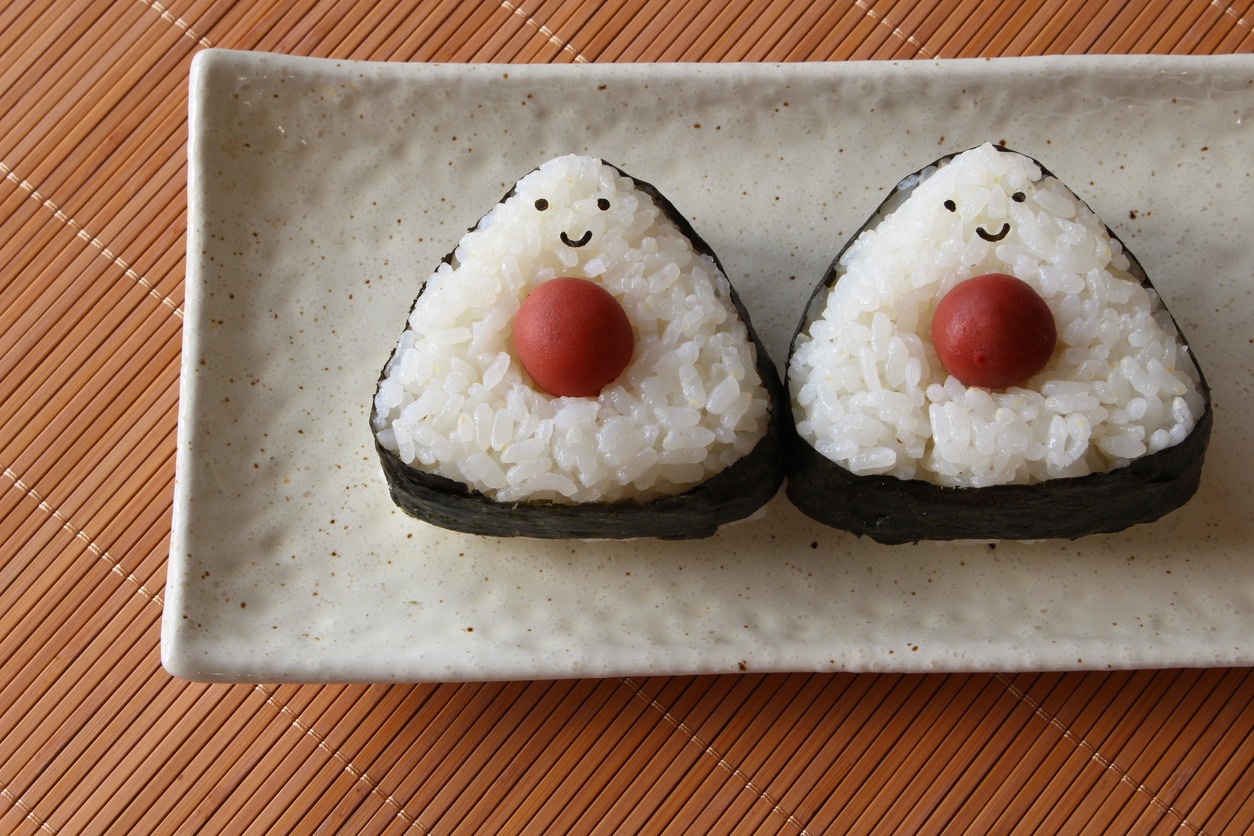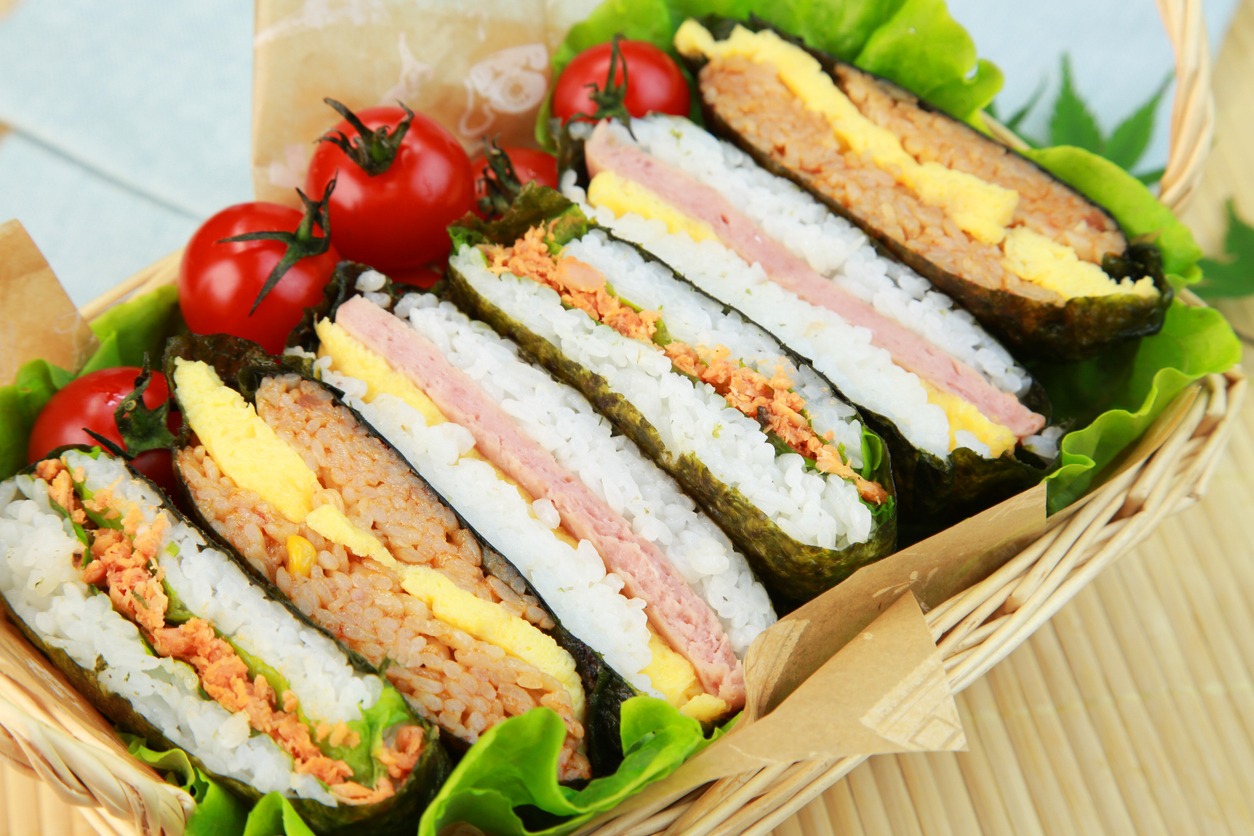Onigiri is equivalent to sushi’s less well-known but equally delicious cousin. It’s a rice ball dish that has been around for centuries in Japan but has gained popularity worldwide in the last century.
Onigiri is among the most adaptable Japanese dishes. It’s a go-to meal, a comfort food, a component of dinner spreads and bento boxes – but most importantly, it’s one of Japan’s most popular snacks for anyone and everyone.
Head into a konbini anytime, and you’ll find a variety of freshly made onigiri ready for purchase and consumption.
Onigiri, like sandwiches, is delicious, versatile, and the ideal quick lunch when your salaryman’s “lunch hour” is six minutes long. However, many foreigners struggle to decipher the plethora of onigiri flavors offered in Japan, as most aren’t popular in Western cuisine.
So, let’s explore the most popular onigiri fillings; the seaweed awaits!
How to Make Onigiri
Sushi rice is required for this recipe. Other types of rice are less sticky, causing the ball to crumble.
After cooking the rice, season with rice seasoning and set it aside to cool, then wet your hands with vinegar water to keep the rice from sticking to your hands.
Begin by rolling a handful of rice into a ball. Create an indent, incorporate your fillings, fold the rice over the indent to completely encase them, and gently press it into a ball. Place a nori slice on the bottom of the rice ball, rough side facing the rice.
Popular Onigiri Fillings and Flavors
Tuna Mayonnaise
Tuna mayonnaise, colloquially known as “tuna-mayo,” is kind of like the signature flavor of onigiri. All Japanese kids grow up eating it, and adults will occasionally reach for it unconsciously, craving the creaminess of the tuna fish combined with mayo to create the perfect umami balance.
Salty Red Salmon
Salty Red Salmon is another common onigiri flavor popular with both adults and children in Japan. When combined with white rice, the salmon flakes are a flavor bomb, giving a perfectly balanced mouthful with each bite.
Vegetables and Chicken
Many of you will enjoy this onigiri filling. Vegetables and chicken are small onigiri rice balls packed with carrots, chicken, and onions cooked in a delicious soy sauce and one of the heartier filling options.
Most of the time, rather than the usual triangular onigiri that you’re looking for, you’ll find these in clear wrapping with the seaweed already rolled up around the rice ball.
Wasabi and Salmon
This onigiri combines two of Japan’s most popular ingredients to create the ultimate flavor. The soft flakiness of the salmon mixed with the strong punch of wasabi combined with fluffy white rice is almost too good to be true.
Spicy Cod Roe and Broth
Spicy cod roe, also recognized as mentaiko, is a popular flavor known for its intense spiciness. However, it is not spicy, as you may have assumed. Mentaiko, unlike wasabi, causes your mouth to tingle rather than burn.
The saltiness of the cod roe complements the plain white rice, giving the consumer an initial spice hit followed by a mellow flavorful mouthful of onigiri.
Pickled Plum (Umeboshi)

Japanese pickled plum (umeboshi) is another popular onigiri flavor in Japan, though it’s not something that all foreigners can easily enjoy!
You may have learned of umeboshi as a common variety of Japanese candy, so it may surprise and unnerve you to learn that it’s also an onigiri filling! The salty and dried plum combo packs a powerful flavor punch.
It’s a bit of an acquired taste, similar to wasabi, but if you’re a daring eater, this is definitely for you.
Ebi Mayo or Shrimp Mayonnaise
Ebi mayo is unquestionably among the most popular onigiri fillings! It’s very similar to the tuna mayo mentioned earlier, but the texture and flavor are quite different. Instead of a creamy and soft texture, the shrimp’s bounciness provides a light crunch as you bite through.
If you’ve tried tuna-mayo and want to branch out, Ebi mayo is your next best bet!
Kelp in Soy Sauce (Kombu)
Kelp in soy sauce, also known as kombu, is a hidden treasure. While this onigiri filling may not have the most enticing name, it is a highly addictive flavor, and even more so if oriental flavors are your Achilles heel.
The kelp is cooked in a mild soy sauce, resulting in a thick and flavorful filling. When combined with crispy nori and plain white rice, it has an understated texture and flavor.
Seaweed in Soy Sauce
This is among the most basic onigiri fillings. We guarantee that anyone who tries it will either like it or love it – but you won’t be able to hate it. The flavor-bomb from the soy sauce and the gelatinous texture of the seaweed makes it the ideal complement to a white rice onigiri.
This supreme afternoon snack will satisfy you for a short period and get you ready for your next meal.
Spam and Egg Onigiri

Many would argue that spam and egg onigiri is the pinnacle of 20th-century onigiri fillings, and we’d have to agree!
Spam and eggs, which originated on Okinawa’s western islands, have been a staple of the Okinawan diet since the second world war. There’s a popular belief that any good restaurant in Okinawa will offer good spam and eggs.
Of course, the best part about all of this is that we now have access to quality spam and egg onigiri. The crunchy texture and super salty flavor of the cooked spam, combined with the creaminess of the egg and the fluffiness of the white rice, all enveloped in a fresh nori sheet, is hands-down delicious.
If you’re planning a trip to Okinawa soon, make a stop at one of the “Pork Tamago Onigiri” restaurants – it’ll be well worth it.
Onigiri is a great option for any situation, whether you’re searching for a cheap thrill or want to stuff your mouth with something edible. If you’re looking for a specific flavor, look for words like tarako or ume within a longer outline on the packaging. The terms of onigiri flavors vary from store to store and can be quite kanji-heavy!
However, not everybody has the opportunity to travel to another country to sample authentic onigiri. So, if you have the time and the ingredients, you can experiment and make your own!


